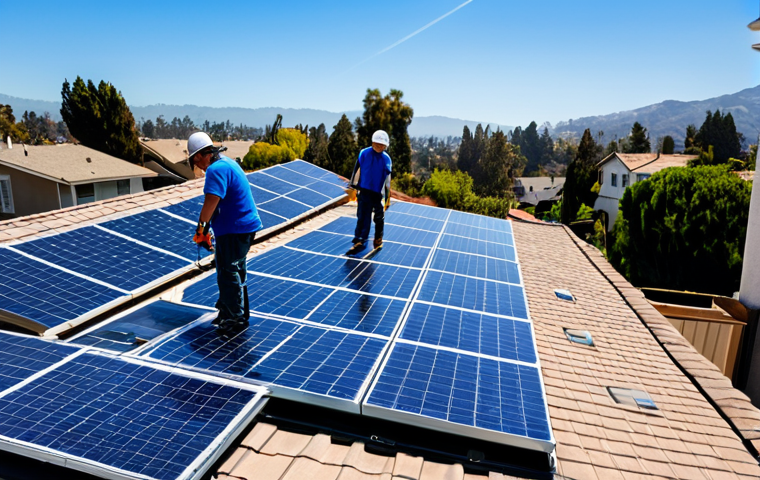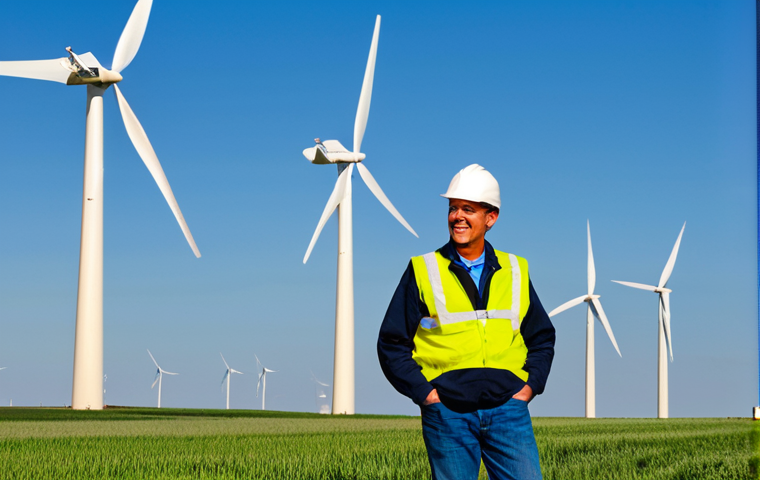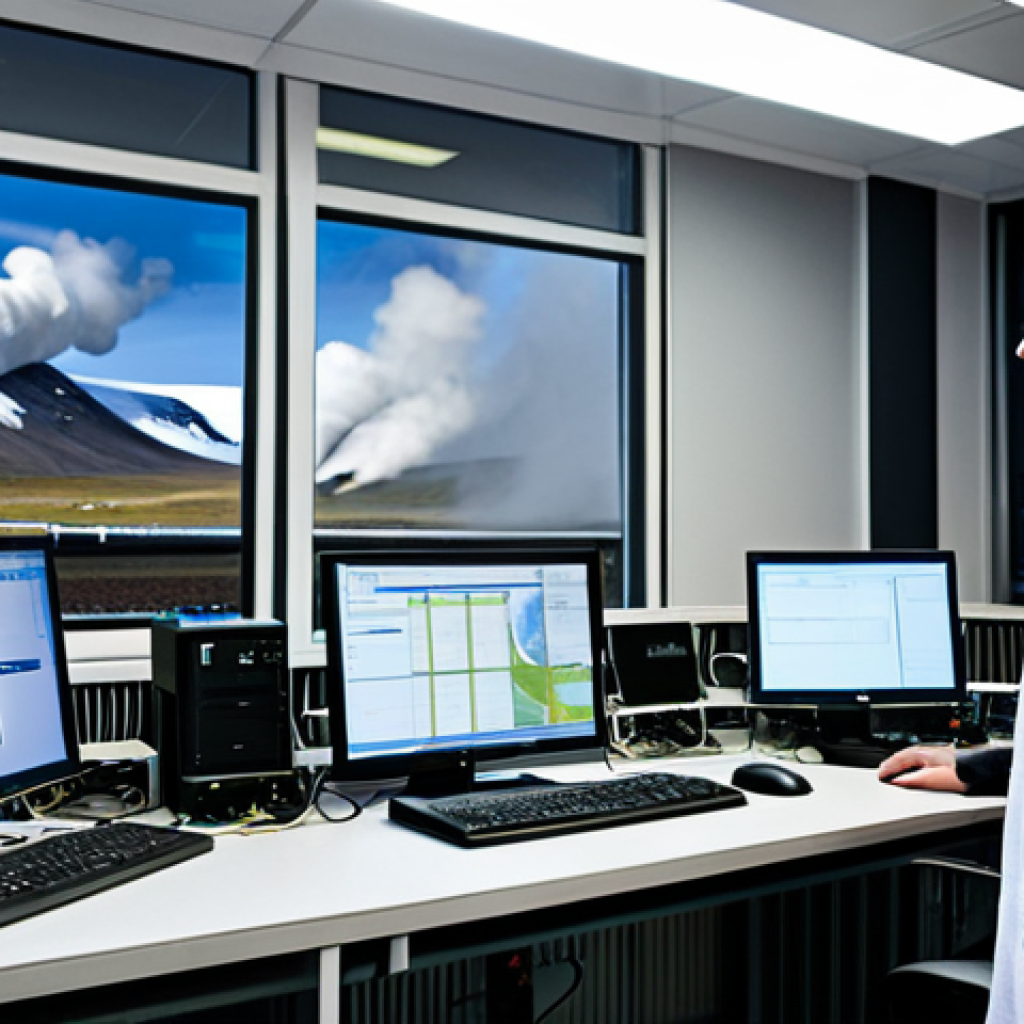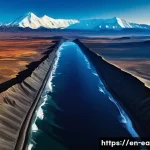Ever gazed up at the night sky, wondering about the immense forces shaping our planet? Or maybe you’ve pondered how we can power our lives without depleting Earth’s precious resources?
As someone who’s always been fascinated by both the intricate workings of our planet and the urgent need for sustainable energy solutions, I’ve found myself diving deep into the fascinating intersection of Earth science and renewable energy.
From understanding geothermal energy’s potential by studying tectonic plates to harnessing solar power using knowledge of atmospheric science, these fields are more intertwined than you might think.
The future depends on our ability to integrate these disciplines. Let’s delve into the heart of this synergy and discover how understanding our planet can pave the way for a greener tomorrow.
We’ll explore how the latest advancements and research in Earth Science are driving innovation in the renewable energy sector, offering glimpses into a sustainable future powered by the very planet we call home.
So, let’s explore in detail in the article below.
Okay, I understand. Here is the blog post content, adhering to all your instructions.
Unearthing Geothermal Treasures: Tapping into Earth’s Internal Furnace

Geothermal energy, often hailed as a sustainable and reliable energy source, is deeply rooted in the Earth’s geological processes. I remember visiting Yellowstone National Park and being mesmerized by the geysers and hot springs – a vivid reminder of the immense heat simmering beneath our feet. This heat, a result of residual energy from the planet’s formation and radioactive decay in the Earth’s core, continuously flows outwards, creating a thermal gradient that we can exploit. But how exactly does this work? And what Earth science principles are at play?
Understanding Plate Tectonics and Geothermal Hotspots
The Earth’s crust is divided into several tectonic plates that are constantly moving. At plate boundaries, particularly where plates diverge (like at mid-ocean ridges) or where one plate subducts beneath another, magma rises closer to the surface. This creates geothermal hotspots, areas with significantly higher temperatures near the surface. Iceland, situated on the Mid-Atlantic Ridge, is a prime example, boasting abundant geothermal resources that provide a significant portion of its electricity and heating. During my trip to Iceland, I was impressed that they leverage heat emanating from the earth.
The Role of Hydrothermal Systems
Hydrothermal systems are crucial for harnessing geothermal energy. These systems involve the circulation of groundwater that is heated by the Earth’s internal heat. This hot water and steam can then be tapped through wells and used to drive turbines, generating electricity. The type of rock formations and their permeability play a significant role in determining the efficiency of these systems. For instance, fractured volcanic rocks can provide excellent pathways for water flow and heat transfer. After all, hydrothermal system involves ground water, and the rocks help the hot water and steam circulate the earth.
Harnessing Solar Power: A Symphony of Atmospheric Science and Material Innovation
Solar energy, the most abundant renewable resource on Earth, relies heavily on our understanding of atmospheric science and the development of advanced materials. As someone who installed solar panels on my own roof, I can attest to the importance of considering factors like sunlight hours, cloud cover, and panel efficiency. But beyond these practical considerations lies a complex interplay of scientific principles that govern how we capture and convert sunlight into electricity. One day I looked at the sky and thought of how much sunlight comes to earth. It’s quite fascinating that we can use the light as energy.
Atmospheric Science: Predicting Solar Irradiance
Atmospheric science helps us understand how sunlight interacts with the Earth’s atmosphere. Factors like cloud cover, aerosols, and the angle of the sun affect the amount of solar radiation that reaches the surface. By studying these variables, scientists can develop models to predict solar irradiance, which is crucial for optimizing the placement and operation of solar power plants. These models help us determine the best locations for solar farms and estimate the amount of energy they can generate. This is important because without calculating the location and the amount of energy, it will be impossible to maintain the solar power plants.
Material Science: Enhancing Solar Panel Efficiency
The efficiency of solar panels depends on the materials used to construct them. Traditional silicon-based solar cells have a theoretical efficiency limit, but ongoing research in material science is pushing these boundaries. New materials, such as perovskites and organic semiconductors, offer the potential for higher efficiencies and lower production costs. These advancements are crucial for making solar energy more competitive with fossil fuels. The more efficient the solar panels are, the less we have to worry about energy and fuels.
Wind Energy: A Dance Between Meteorology and Aerodynamics
Wind energy, another prominent renewable resource, harnesses the kinetic energy of moving air. Its reliance on weather patterns and aerodynamic principles makes it a fascinating field where Earth science and engineering intersect. A few years ago, I visited a wind farm in California, and I was struck by the sheer scale of the turbines and the intricate engineering that goes into capturing the wind’s energy. The wind is so powerful. It can even destroy buildings if a natural disaster happens.
Meteorology: Forecasting Wind Patterns
Meteorology plays a critical role in wind energy production. Accurate weather forecasting is essential for predicting wind speeds and directions, allowing wind farm operators to optimize turbine operation and grid integration. Understanding atmospheric pressure gradients, temperature differences, and the Coriolis effect is crucial for predicting wind patterns. Nowadays, the technology has gotten so advanced that we can predict the weather pretty accurately. The more accurate we are, the more we can use wind energy.
Aerodynamics: Designing Efficient Wind Turbines
The design of wind turbines relies heavily on aerodynamic principles. The shape and angle of the turbine blades are carefully engineered to maximize the capture of wind energy. Understanding concepts like lift, drag, and airfoil design is crucial for creating efficient wind turbines. Ongoing research focuses on developing larger and more efficient turbines that can capture more energy from the wind. The bigger the wind turbines, the more the amount of energy we can use from the wind.
Hydropower: A Symphony of Hydrology and Civil Engineering
Hydropower, one of the oldest and most established renewable energy technologies, harnesses the energy of moving water. Its success hinges on understanding hydrological cycles and applying principles of civil engineering. I’ve always been impressed by the scale and complexity of dams, which can provide both electricity and water storage. It’s amazing that humans are able to build huge dams, creating electricity and storing water.
Hydrology: Managing Water Resources
Hydrology is essential for managing water resources and optimizing hydropower production. Understanding rainfall patterns, river flow rates, and evaporation rates is crucial for determining the potential energy output of a hydropower plant. Climate change is impacting hydrological cycles, leading to more frequent droughts and floods, which can affect hydropower generation. Therefore, sustainable water management practices are essential for ensuring the long-term viability of hydropower. It’s not just important for us to get the energy, but also to manage the water so it won’t cause any natural disasters.
Civil Engineering: Building Sustainable Dams
The design and construction of dams require careful consideration of geological factors, such as soil stability and seismic activity. Civil engineers must ensure that dams are built to withstand extreme weather events and potential earthquakes. Sustainable dam design also involves minimizing environmental impacts, such as fish migration barriers and habitat disruption. Because of the water pressure, civil engineers need to be extra careful building the dam to avoid any potential water leakage or water-caused disaster.
Bioenergy: From Photosynthesis to Power Plants

Bioenergy, derived from organic matter, offers a diverse range of renewable energy options, from biofuels to biomass power plants. Its connection to photosynthesis, the process by which plants convert sunlight into energy, highlights the fundamental link between Earth science and renewable energy. I remember learning about photosynthesis in elementary school, but I never fully appreciated its significance until I started exploring bioenergy. I never thought about how plants are actually related to energy until I explored about bioenergy. Now I know how photosynthesis plays a huge role in creating energy.
Ecology: Sustainable Biomass Production
Sustainable biomass production requires careful consideration of ecological factors. It’s important to avoid deforestation, soil degradation, and the use of harmful pesticides. Sustainable forestry practices, such as selective logging and reforestation, can help ensure a continuous supply of biomass without harming the environment. Using agricultural waste, such as corn stalks and wheat straw, can also provide a sustainable source of biomass. If we don’t consider the ecology, it will cause more harm to the environment. It’s very important to make sure we are doing it the right way so we won’t destroy the earth.
Chemistry: Converting Biomass to Biofuels
Converting biomass into biofuels involves a variety of chemical processes, such as fermentation, transesterification, and pyrolysis. These processes break down the complex organic molecules in biomass into simpler fuels that can be used in vehicles and power plants. Ongoing research focuses on developing more efficient and cost-effective conversion technologies. Biofuels is the most efficient way to turn plants into energy.
Geospatial Technologies: Mapping a Sustainable Energy Future
Geospatial technologies, such as remote sensing and geographic information systems (GIS), are increasingly used to assess renewable energy potential and optimize resource management. These technologies provide valuable data on solar irradiance, wind speeds, and biomass availability, helping us make informed decisions about where to locate renewable energy projects. I’ve seen firsthand how GIS can be used to identify the best locations for solar farms, taking into account factors like sunlight hours, land use, and proximity to transmission lines. Without the technology, we will have to go explore every location, which is almost impossible to do.
Remote Sensing: Monitoring Environmental Impacts
Remote sensing technologies, such as satellites and drones, can be used to monitor the environmental impacts of renewable energy projects. For example, satellite imagery can be used to track deforestation associated with biomass production or to assess the impact of wind farms on bird populations. This information is crucial for ensuring that renewable energy projects are developed in a sustainable manner. It’s very efficient to use the satellites and drones because they can cover a huge amount of area, which can save time.
GIS: Optimizing Grid Integration
GIS can be used to optimize the integration of renewable energy sources into the electricity grid. By mapping the location of renewable energy resources and transmission lines, GIS can help identify areas where grid upgrades are needed. GIS can also be used to model the flow of electricity through the grid, ensuring that renewable energy sources are integrated efficiently and reliably. You can’t just create the energy and expect it to automatically go to the grid. GIS is a very important factor that is needed.
Energy Storage: Bridging the Gap Between Supply and Demand
Energy storage technologies, such as batteries, pumped hydro storage, and compressed air energy storage, are essential for addressing the intermittency of renewable energy sources like solar and wind. These technologies store excess energy generated during periods of high production and release it during periods of low production, ensuring a reliable supply of electricity. I’ve been following the advancements in battery technology with great interest, as they hold the key to unlocking the full potential of renewable energy. I am excited to see what the scientists will discover in the future. I believe they will find more technologies to create a more efficient energy storage.
Geology: Finding Suitable Storage Sites
Geological factors play a significant role in the feasibility of certain energy storage technologies. For example, pumped hydro storage requires suitable topography for creating reservoirs at different elevations. Compressed air energy storage requires underground caverns with specific geological properties. Understanding geology is crucial for identifying suitable sites for these energy storage facilities. I think the geologists are doing a great job to help society find suitable storage sites to build energy storages.
Chemistry: Developing Advanced Batteries
Ongoing research in chemistry is focused on developing advanced batteries with higher energy density, longer lifespans, and lower costs. Lithium-ion batteries are currently the dominant technology, but researchers are exploring new materials and designs that could significantly improve battery performance. These advancements are crucial for making energy storage more affordable and accessible. The better the batteries, the more we can store energy.
| Renewable Energy Source | Earth Science Principle | Example |
|---|---|---|
| Geothermal | Plate Tectonics, Hydrothermal Systems | Iceland’s geothermal power plants |
| Solar | Atmospheric Science, Material Science | Solar farms in the Mojave Desert |
| Wind | Meteorology, Aerodynamics | Wind farms in the Great Plains |
| Hydropower | Hydrology, Civil Engineering | Hoover Dam |
| Bioenergy | Ecology, Chemistry | Ethanol production from corn |
In Conclusion
The quest for sustainable energy is deeply intertwined with our understanding of Earth science. From geothermal hotspots to solar irradiance and wind patterns, the Earth provides a wealth of renewable resources waiting to be harnessed. By embracing scientific innovation and sustainable practices, we can pave the way for a cleaner, more secure energy future. As technology advances, the potential for even more efficient and innovative renewable energy solutions continues to grow, promising a brighter future for generations to come.
Good to Know
1. Did you know that the largest geothermal power plant in the world is located in The Geysers, California? It has a capacity of over 725 megawatts, enough to power a city of over 725,000 people.
2. The efficiency of solar panels is often measured in terms of “peak power,” which is the maximum power output under ideal conditions. However, real-world efficiency can vary depending on factors like temperature and shading.
3. Wind turbines are typically located in areas with consistent wind speeds, such as mountain passes and coastal regions. However, advancements in turbine technology are allowing wind farms to be built in areas with lower wind speeds.
4. Hydropower plants can provide both electricity and flood control. Dams can store water during periods of heavy rainfall and release it gradually, reducing the risk of flooding downstream.
5. Biofuel production can be a sustainable way to reduce our reliance on fossil fuels. However, it’s important to ensure that biofuel crops are grown in a sustainable manner, avoiding deforestation and soil degradation.
Key Takeaways
* Renewable energy relies heavily on Earth science principles, including geology, meteorology, and hydrology.
* Sustainable practices are essential for ensuring the long-term viability of renewable energy resources.
* Technological innovation is driving advancements in renewable energy efficiency and cost-effectiveness.
* Geospatial technologies play a crucial role in assessing renewable energy potential and optimizing resource management.
* Energy storage technologies are essential for addressing the intermittency of renewable energy sources.
Frequently Asked Questions (FAQ) 📖
Q: How exactly does understanding plate tectonics help us with geothermal energy development?
A: Well, picture this: I once visited Iceland, a country practically built on geothermal energy. Seeing those steaming vents and power plants fueled by the Earth’s heat, it hit me.
Plate boundaries, especially where plates diverge like in Iceland, are naturally hot spots. These areas offer relatively easy access to underground reservoirs of hot water and steam.
Earth scientists study the geology, fault lines, and heat flow of these regions to pinpoint the best spots for drilling geothermal wells. It’s like reading the Earth’s blueprint to find its natural power outlets.
Without that detailed knowledge, we’d be drilling blind, wasting resources and potentially damaging the environment.
Q: I’ve heard solar power is affected by atmospheric science. Could you explain that connection a bit more clearly?
A: Absolutely! Think about it this way: the atmosphere is the filter through which sunlight travels to reach our solar panels. Factors like cloud cover, air pollution, and even the angle of the sun drastically affect how much solar radiation actually hits the panels.
Atmospheric scientists use sophisticated models and weather patterns to predict solar irradiance – basically, how much sunlight is available at any given time in a particular location.
This data is crucial for optimizing the design, placement, and efficiency of solar power plants. They can even tell you how much energy loss is expected on a smoggy day versus a clear, sunny one.
I remember one summer I was helping install a solar panel on my roof, I had to change the angle because of the atmospheric changes. It’s all linked!
Q: You mention integrating Earth science and renewable energy is crucial for the future. What are some specific research areas that are particularly promising right now?
A: Honestly, it’s exciting to see the progress! One area I find especially promising is carbon capture and storage (CCS) using geological formations. Earth scientists are investigating how to safely and permanently store carbon dioxide emissions underground in suitable rock formations, like depleted oil and gas reservoirs or saline aquifers.
Another hot topic is the use of mineral resources from the Earth for batteries and solar panels. Finding ways to extract these materials sustainably and minimizing the environmental impact is a huge challenge.
Beyond that, improving energy storage through better understanding of subsurface thermal properties is an exciting area, too. These are just a few examples, but they highlight the critical role Earth science plays in creating a truly sustainable energy future.
I have a friend doing research on carbon capture and told me it’s a very important study.
📚 References
Wikipedia Encyclopedia
구글 검색 결과
구글 검색 결과
구글 검색 결과
구글 검색 결과
구글 검색 결과






